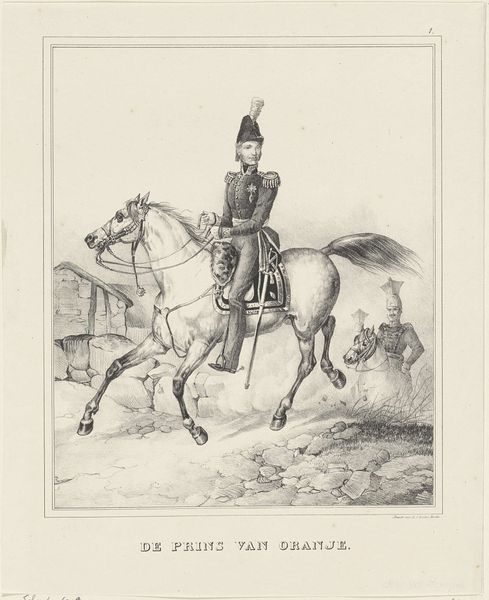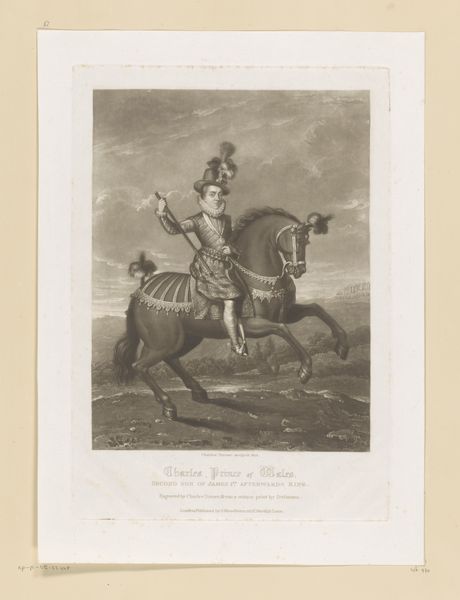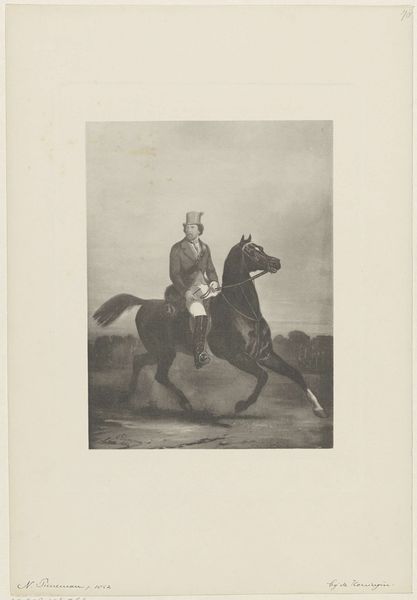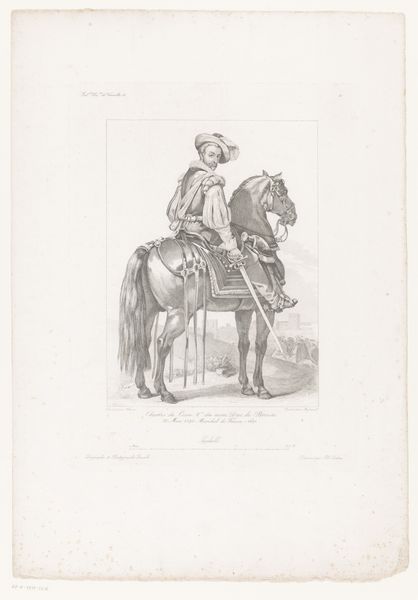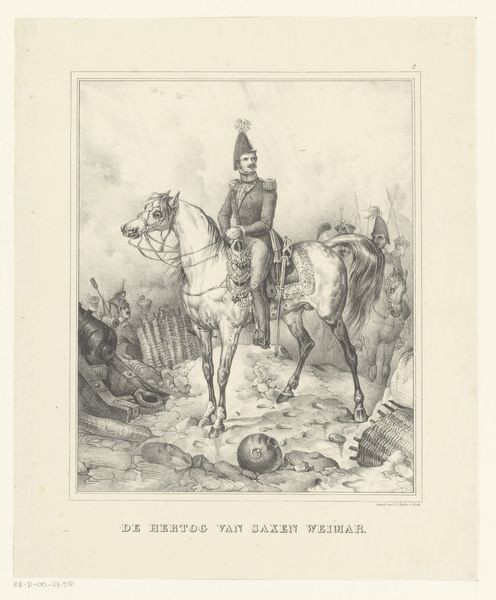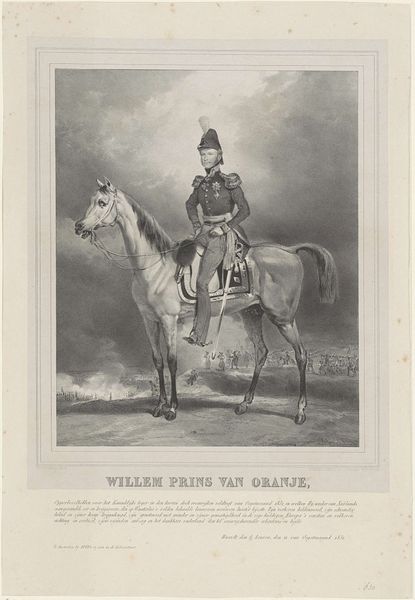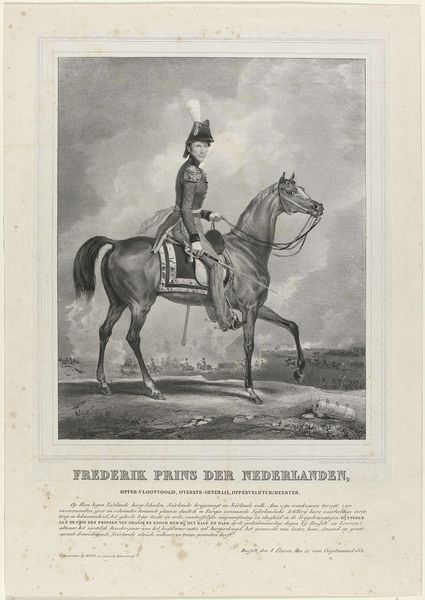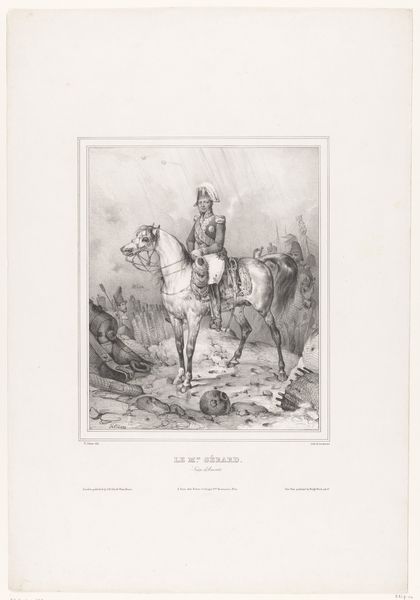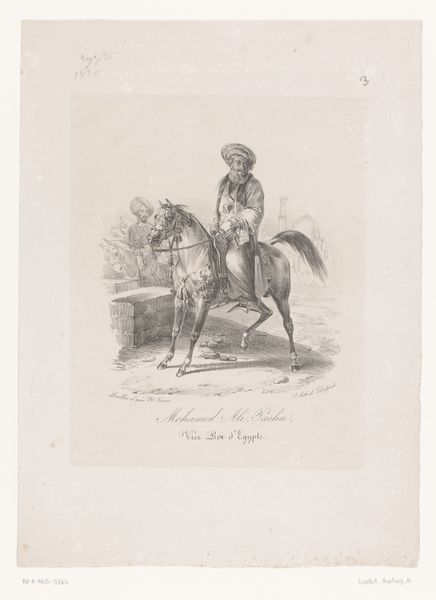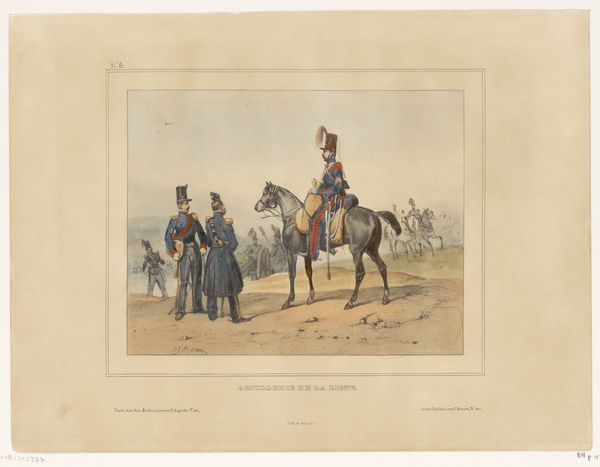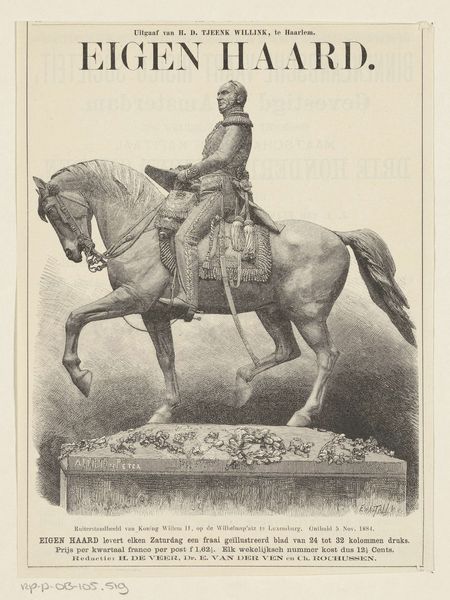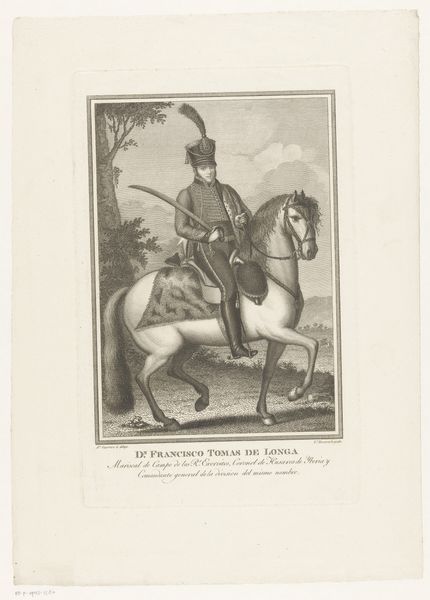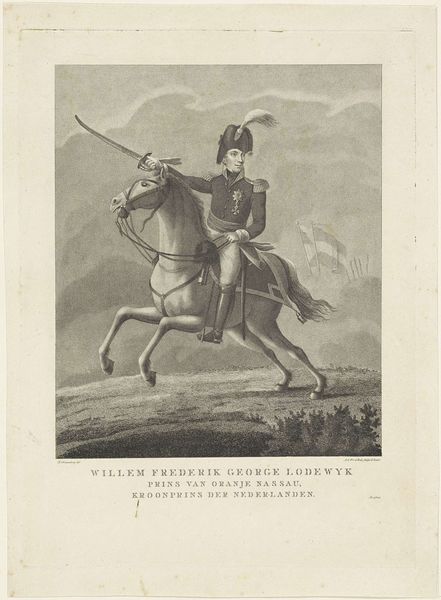
print, pencil, engraving
portrait
old engraving style
landscape
romanticism
pencil
history-painting
academic-art
engraving
Dimensions: height 569 mm, width 417 mm
Copyright: Rijks Museum: Open Domain
Curator: Here we have Théodore Fourmois’ “Equestrian Portrait of William II, King of the Netherlands,” created between 1831 and 1833. It’s a print combining pencil and engraving techniques, currently held in the Rijksmuseum collection. Editor: My first impression is a sense of austere elegance. The subtle tonal gradations, typical of engravings, give the entire composition a rather somber mood, despite the grandeur of the subject. Curator: The image very consciously aligns William II with an archetype of leadership, steeped in martial and noble symbolism. Think of the long and prestigious history of the equestrian portrait. What could Fourmois be attempting to impart about the newly formed Kingdom of the Netherlands through this image? Editor: Structurally, the composition adheres to a rather conventional hierarchical arrangement, right? William dominates the frame, elevated both literally and figuratively atop his mount. However, the artist complicates this traditional symbolism via details like the understated rendering of the distant battle scene. It feels somewhat detached, like a backdrop to his regal poise. Curator: Exactly! The distant battle alludes to William's military prowess during the Napoleonic Wars, lending legitimacy to his claim. Notice how Fourmois includes this image, although somewhat distant, with symbolic intention. It presents a picture of restrained strength rather than overt aggression—emphasizing diplomacy and the intellectual capacity associated with governance rather than raw power. Editor: And, might the artist, using these precise technical processes and their inherent qualities, attempt to create an impression of objective accuracy? An idea that could reinforce the image’s propagandistic function. Curator: Absolutely. It's a fascinating interplay between symbolic weight and formal precision, presenting William II as both a powerful ruler and a cultured, rational leader. The image seems to attempt to weave his legacy into the fabric of Dutch national identity. Editor: Indeed. Reflecting on this artwork I find myself struck by how even seemingly straightforward depictions of power are so multifaceted, laden with symbolic and structural complexities. Curator: Likewise. I will carry with me the notion of symbolic power, which helps to contextualize the individual experience through an understanding of collective history.
Comments
No comments
Be the first to comment and join the conversation on the ultimate creative platform.
